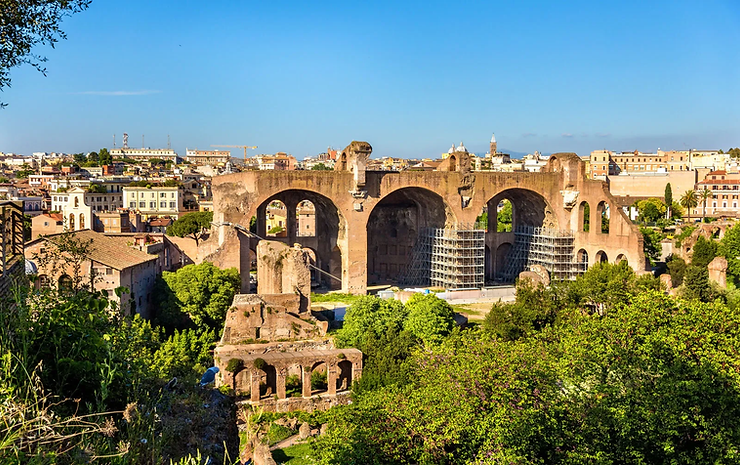By: Andrew Zhang
For many millennia, people across the Middle East and Africa have been
building with mud because of the many environmental and technical benefits of
constructing with such a sustainable building material.
According to the United Nations’ Intergovernmental Panel on Climate
Change (IPCC), most cities and settlements are currently unprepared for major
natural events and should build more climate-resistant structures.
Mud solves this problem.
How does it do this? Mud buildings are able to withstand natural events like
earthquakes and heavy winds “because of the ability of its structure to distribute
the load that it faces on its surface, unlike concrete or cement,” says Salma Samar
Damluji, co-founder of the Daw’an Mud Brick Architecture Foundation in Yemen
and author of The Architecture of Yemen and its Reconstruction.
Waterproofing is also present in these structures. Mud buildings are
“protected from seasonal rains and flash floods due to the dampproof and
protective external rendering used in several layers of refined mud, ash and lime
coating and plaster”, says Salma Samar Damluji.
Other than protecting the environment, using mud to build can help you live
a more comfortable and cheaper life. “In comparison to buildings constructed of
concrete or corrugated metal, mud brick buildings keep relatively stable interior
temperatures across a 24-hour period and thus supply inhabitants with far superior
thermal comfort. An added bonus is that the thick mud-brick walls also reduce noise
levels from outside or next door,” says Trevor Marchand, emeritus professor of
social anthropology at London’s School of Oriental and African Studies and author
of The Masons of Djenné.
Mud does this by using a capture and release technique. “Mud walls collect
heat during the day from solar radiation and release it at night. The temperature
never fluctuates – it’s always at a comfortable level,” says Pamela Jerome, a US
architect and president of the Architectural Preservation Studio, which focuses on
restoration projects around the world.
This effect also helps the environment. Due to mud’s ability to trap heat when
it’s hot and release captured heat when it’s cold, air-conditioning
units are less necessary. This reduces the ecological footprint of the building, as ACs
use large amounts of electricity and contain refrigerants that can cause excess
greenhouse gas emissions.
It even helps with humidity. “The earth has the ability to absorb excess
moisture from the air, and to release it, if necessary, which is why we say that these
houses ‘breathe’,” says Dragana Kojičić Dragana Kojičić, a Serb who specializes in
raw-earth construction.
Even though mud houses are often seen as primitive, they can be made as
comfortable as you want. “Every mud house … can be totally adapted and easily
retrofitted with electricity and plumbing,” says Pamela Jerome.
Renovations won’t come with excess waste that needs to be carted away to a
landfill. “Mud buildings are extremely adaptable. If you want to pull a wall down or
change the design, you can recycle all the materials,” says Salma Samar Damluji.
“Mud is the champion of future sustainable construction. It is the only
material we can recycle as often as we like, without using any energy. It actually
gets better the more you use it,” says Anna Heringer.
Plus, mud doesn’t discriminate. “Mud is a very inclusive material; poor and
rich can build with it,” says Anna Heringer, an Austrian architect who creates
buildings using natural materials such as mud and bamboo. She has been working
with mud for 20 years and has designed many notable earthen buildings, including
the METI handmade school in Rudrapur, Bangladesh, for which she received the Aga
Khan Award for architecture in 2007. “You don’t need any tools to build with it, you
just use your hands.”
Some of these mud buildings have even become world famous. The mud
architecture in the ancient walled city of Sana’a is so special that it had been
designated a UNESCO World Heritage Site.
Sana’a, while only having mud buildings, attracts people looking to study
both culture and canvas. “As an outstanding example of a homogeneous
architectural ensemble reflecting the spatial characteristics of the early years of
Islam, the city in its landscape has an extraordinary artistic and pictorial quality. The
buildings demonstrate exceptional craftsmanship in the use of local materials and
techniques,” UNESCO writes in its description of Sana’a.
Another mud city, Djenné in Mali, houses the largest mud building in the
world. This structure is the Great Mosque, which stands at 66 feet and is built on a
platform that is 300 feet long.
This Great Mosque also acts as a place for community. Djenné’s residents have
an annual tradition of rebuilding the Great Mosque. This yearly operation is
supervised by a group of senior masons.
“Everyone takes part. Boys and girls mix the mud, women bring the water
and masons direct the activity,” says Trevor Marchand.
Unfortunately, like many other building materials, mud has its drawbacks. It
is possible to use it in an unsustainable way, reducing land used to grow crops.
In order to maintain a positive impact, the foundation and the building’s
location are key. In 2008, a severe flood in the Hadhramaut region of Yemen
damaged around 5,000 buildings, most of which were built on a floodplain and had
weak foundations or none at all. Compare this to the desert valley of Wadi Dawan
where only about 25 buildings were damaged, because it had mud buildings with
foundations around 5 feet in the ground and were made of nonporous dry stone,
and had paths within the valley that led floodwater into the irrigation canals for
date palm groves.
But for many, mud is the way forward in the housing industry. “We cannot
live in these concrete jungles anymore. We have to consider the environment and
biodiversity. We cannot construct in isolation,” says Salma Samar Damluji.











